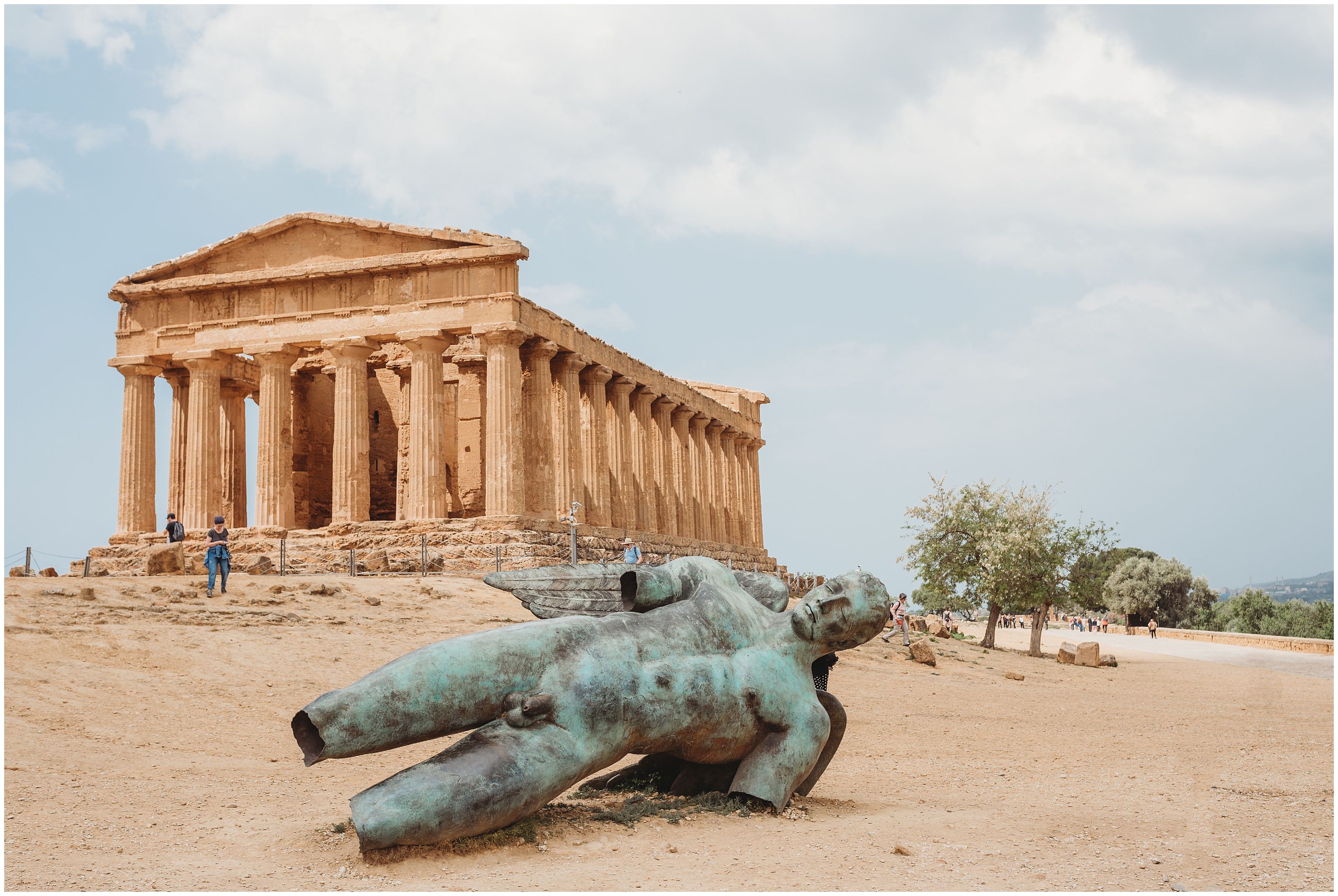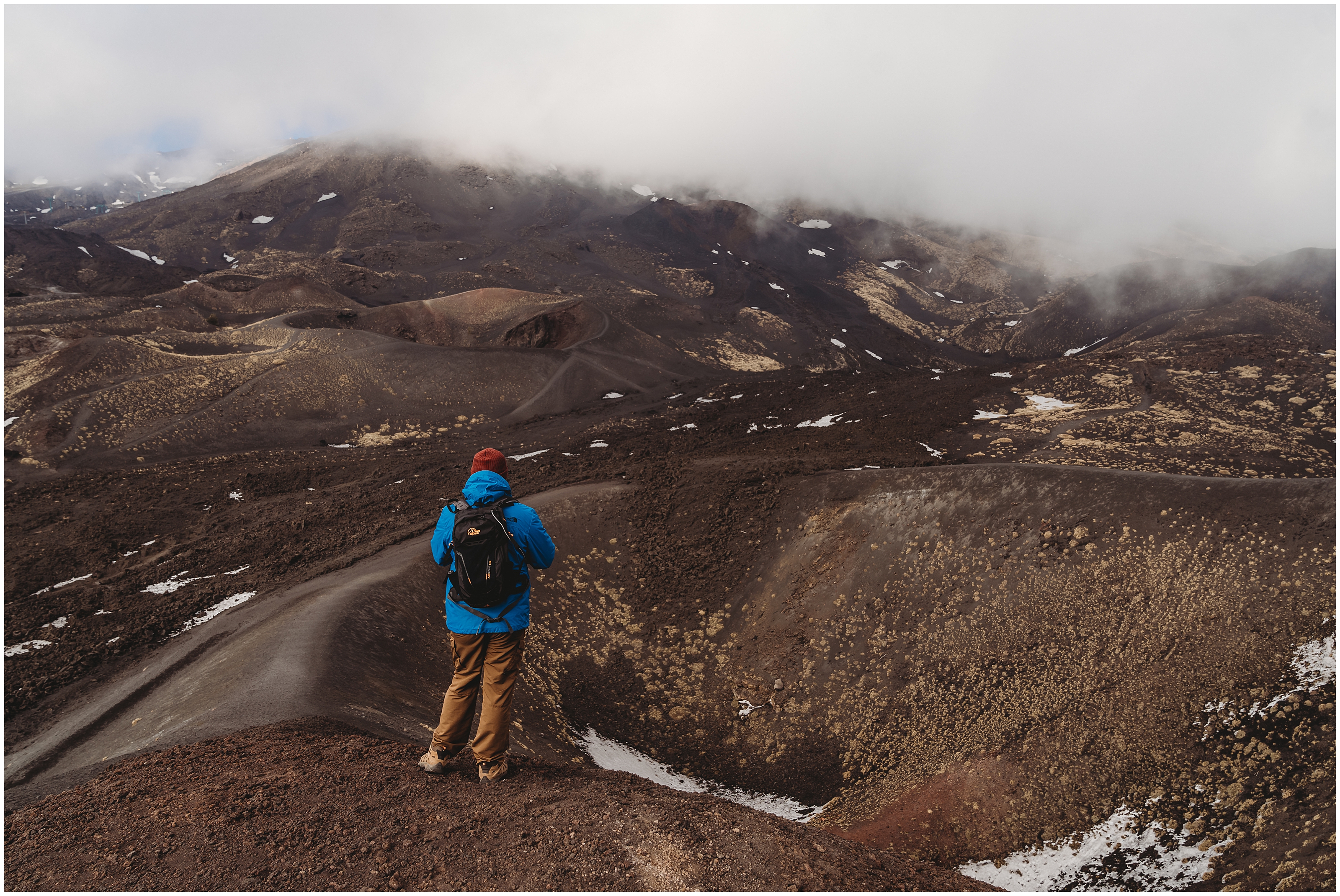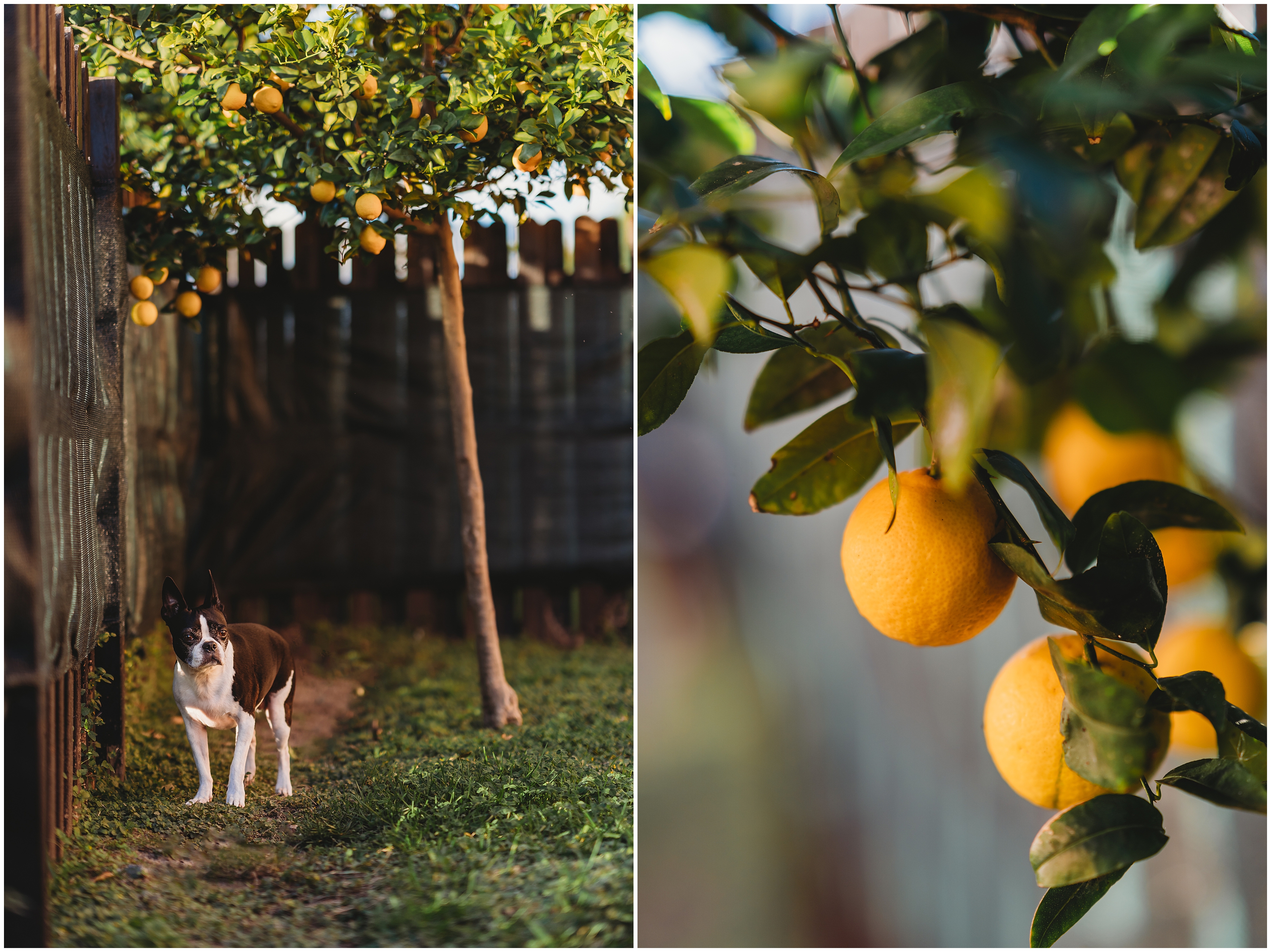nav
2019 has been a year of road trips for us and we have loved every moment! Tuscany was our first official road trip of 2019. The entire trip, we kept asking ourselves over and over why we didn’t do it sooner. It was complete BLISS!! Of course, there was so much to see and do and we couldn’t conquer it all, so we have a second trip planned for fall.
Because we had THE BEST TIME on this trip, I wanted to share our itinerary. Planning our Tuscany road trip proved to be a bit more difficult than I expected, because I was set on seeing the Tuscany you see in the movies. But since that part of Tuscany is the countryside, there isn’t as much about it on good old Google as I thought. By the way, did you know that area is called Val d’Orcia? I initially didn’t!
As I’m not a strict planner, I had a TON of options for things to do and see on the itinerary so we could choose at our leisure along the way. So in the itinerary below, I’ve provided the things we did AND the things we didn’t get to do. You know, just so you have options :). Our Tuscany itinerary hits places that are: low-key, reduced crowds, and don’t have a TON of attractions. Whether you’re planning a trip yourself, or just checking out the photos, enjoy!!

A Tuscan Road Trip | Italy
Pisa
We flew into Pisa instead of Florence (because it was cheaper). While we were in Pisa, we took a short drive from the airport to see the Leaning Tower of Pisa. It was BUSY and quite touristy! We spent about an hour there walking around and taking photos before we hit the road to drive south and work our way back up.

Arezzo
Along the way to our first hotel, we stopped in Arezzo. Arezzo is known for its Renaissance art (see The Legend of the True Cross by Piero della Francesca in the Cappella Maggiore in the Basilica di San Francesco), medieval jousting (we did not see this), its famous film locations (e.g. Life is Beautiful – see Piazza Grande), and FAB antique shopping (seriously, bring a checked bag). It was, like most of the towns we visited, quite picturesque. It also wasn’t crowded, which was a HUGE plus for me.

Montepulciano
We felt Montepulciano would be a great base for us in the southern Tuscan area (we were right!). We booked one night at Villa Poggiano (10/10 would recommend).
The town boasted vast panoramas, ancient churches, and a plethora of Renaissance buildings. We had dinner at La Bottega del Nobile and enjoyed walking around and exploring the town. Montepulciano is know for Nobile wine (vino nobile di Montepulciano) and its underground wine cellars. It is also known as the location of the Twilight sequel New Moon (ha!), so you can expect a few more tourists than in other Val d’Orcia towns. You can tour these cellars in the town and sample all the wines!! This was one of our favorite stops!! Here are some wine recommendations:
- Cantine Fanetti – the “father” of nobile.
- Villa S. Anna – an all women (production) winery


Monticchiello
We stopped in for a moment to wander one of the most beautiful medieval villages. Not much to do here but we did wander around, buy some art, and grabbed a drink and bite to eat. From the city gate, you’ll be privy to absolutely stunning views across the valley to Pienza.

Bagno Vignoni
A small, thermal village which is unique in that its town square is a pool of hot springs! You can’t swim in the main “square,” but you can swim in the Parco dei Mulini . We didn’t swim, but we did visit and it was STUNNING seafoam green waters. We spent a ton of time here just hanging out by the water.
Winery: Podere Le Ripi

Pienza
Once the summer home of Pope Pius II, Pienza is an ideal Renaissance town. Don’t miss the street “Via dell’Amore” aka Love Street! The main sights include: the cathedral, Piazza Pio II, Palazzo Piccolomini, Plazzo Borgia, and Palazzo Comunale.
Brewery: La Fonte

San Gimignano
The “Town of Fine Towers.” The “Manhattan of the Middle Ages.”During the 14th century, every well off family in San Gimignano built a tower to show its economical power. Today, 13 towers still remain.
San Gimignano had many more tourists than any town we visited in Val d’Orcia. Thus, we were a bit more partial to the towns down south. However, there is tons to see and do here including: the Cathedral, which is considered to be one of the most well known in all of Tuscany. The Vernaccia di San Gimignano, a white wine produced only here, is a must try.
For dinner: Locanda la Mandragola – Amazing quality food. Make sure you arrive early if you don’t have a reservation.

Certaldo
A small, yet extremely photographic and picturesque small town. We randomly stopped here, but would come back. At Palazzo Pretorio, you can tour a pretty enthralling medieval castle. Upon purchasing your ticket for the castle, you also receive entry to Boccaccio’s house. I wasn’t super into visiting this house, but did it anyway (because free). I was glad I did because it provided access to a tower overlooking the entire town!
Winery: I Balzini


Volterra
A walled town known worldwide for its alabaster hand-made objects is less popular than it’s neighbor San Gimignano, but nonetheless worth the visit. It features the oldest town hall in Tuscany (Palazzo dei Priori) and a rather unique duomo (Cathedral of Santa Maria Assunta). The walls and gates of the city are Etruscan with many sections from the 13th century. We also visited the Medici Fortress and walked around the Roman Amphitheater while there.
We wandered into a tiny little wine shop that focused solely on selling small batch wines: Enoteca Scali. They have a plethora of excellent wines on tap that you can taste, sample, or have a glass.
Wine Tasting: Enoteca Scali

Val d’Orcia Region







Cities we wanted to visit, but didn’t make it to: Sienna, Lucca, Florence.
Maybe next time, Tuscany!
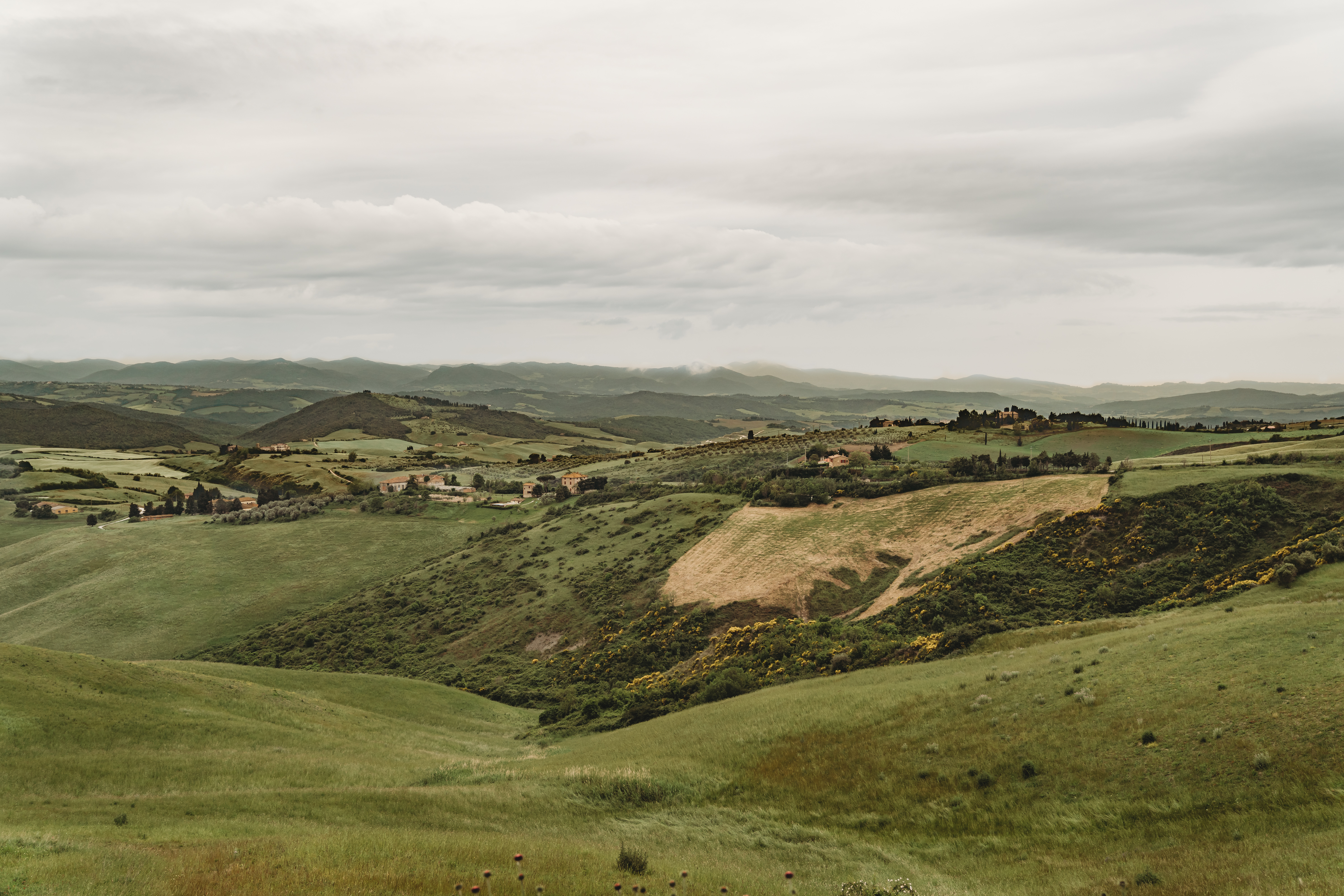
The Dolomites were on my “to visit” list for a long time, but I just didn’t know when to go to how to narrow down what to do. The possibilities for things to do and see seem endless initially. Once we were able to narrow it down, creating the itinerary was a breeze. In case you’d like to visit the Dolomites (or are just curious about what we did), I’m sharing our 4-day road trip itinerary with you!
We take a lot of trips of four day weekends because it’s convenient with our work schedules. This works perfectly for a short trip to the Dolomites, but if you have the option to stay longer, do it! The more time, the merrier!

Day 1
Flights:
We flew into Venice (Marco Polo) airport, because that was the most convenient and cheapest option for us. You can also fly into Venice (Treviso), Verona, or Innsbruck, Austria for short drives. Milan and Munich are other options that are a bit further away. For more detailed information on transportation, see “How do I get there?” here.
Rental Car:
After flying into Venice, we rented a car. We are Hertz Gold Card members (do it, it’s free!), so we don’t have to wait in the hours of lines to rent a car. It’s an incredibly nice service to have (and for free!) and saves us a ton of time.

Hotel:
We hopped in our rental and drove to our hotel in Cortina. From Cortina, we visited Tre Cime (~45 minutes) and Lago di Sorapis (~20 minutes). The town is much more built up than I thought it would be and has lots of shopping. To be honest, I was a bit surprised by all of the designer shops! If you need any additional gear, you can always stop at a shop in town.
For more about where to stay, see “Where should I stay?” here.

Hike:
Tre Cime di Lavaredo – You could definitely spend DAYS hiking here, but we opted to arrive a few hours before sunset for two reasons: reduction of crowds and getting to watch sunset and hike back in the dark. This was my absolutely favorite hike of the whole trip. It was vast and stunning and a relatively easy one! The paths are wide and a bit rocky with some sheer drop-off cliffs. The views were STUNNING as everything is wide open and you can see for miles.
Get a pin and more specific details about visiting Tre Cime di Lavaredo under “Where are the places I must see in the Dolomites?” here.






Day 2
We spent the morning shopping and eating before we embarked on our evening hike.
Hike:
Lago di Sorapis – This hike is the complete opposite of Tre Cime di Lavaredo. It’s very leafy and with several walks thought the forest and a tiny, one person path. I would 100% recommend visiting here in the early morning or evening, as it would be pretty annoying to be stuck in the hiking conga line. This hike was harder and a bit more dangerous. Jordan liked this hike more than Tre Cime. The lake at the end made it worth it! A helpful tip is to bring bug spray.
See more details about how to find Lago di Sorapis, under “Where are the places I must see in the Dolomites?” here.







Day 3
From Cortina, we drove west toward Ortiesi for our last night. Along the way we drove though the old Dolomites road which included several small towns, Passo Sella and Passo Gardena. We made sure to stop along the way for some photos and just to enjoy the general splendor. There are many gondolas and hiking trails to stop off on along the way if you have time!
For more about Passo Sella and Passo Gardena, see “Where are the places I must see in the Dolomites?” here.




Hotel:
After arriving at our hotel, Alpenhotel Rainell, we decided to relax at the spa and pool until dinner. The views from this hotel were worth it!



Day 4
Walk:
We awoke early (I’m talking 4:30AM) to drive to Alpe di Suisi for sunrise views. We were sleepy, but the 30 minute walk to my view of choice was easy and we were rewarded with some killer views!!
Learn more about visiting Alpe di Suisi by reading “Where are the places I must see in the Dolomites?” here.







After returning to the hotel, we checked out and drove over to the Seceda lift. We purchased two lift tickets and up, up, and away we went. The views are the top were completely incredible and we definitely wanted more time here.
Read more about how to reach Seceda under “Where are the places I must see in the Dolomites?” here.






After two hours at the top, we took the lift back down to the car and drove the three-ish hours to the airport.
We had several places we wanted to see but didn’t get to (due to time and my unwillingness to deal with people), so we will return once again! Check out some additional places to visit by scrolling all the way to the bottom of the page and reading “Places we didn’t have time for, but want to see when we return” here.
Could you pack in more than we did? Absolutely! Would you want to? Well, that’s totally up to you!

If there is one single thing I knew I must do while living it Italy, it was visit the Dolomites. After posting a ton of photos on Instagram (check them out here), I realized that many others dream of visiting as well. The planning and researching stages of this trip were a bit tedious (as with our trip to Ireland), since I didn’t really know from the beginning which places were a “must see” in the Dolomites. Thus, I thought I’d write about exactly what to see and how to visit here!

What are “the Dolomites?”
From my Instagram stories, I’ve had many questions about the Dolomites. To clarify, the Dolomites are located in northern Italy and are a part of the Southern Limestone Alps. One thing you will realize very quickly is that everything there has two names – one in Italian (as they are in Italy) and one in German. While you’re there, you feel like you are in Germany. The towns have a very Bavarian feel and many people wear traditional Bavarian attire. Just think of it as a place where you can order both pasta AND apple strudel at dinner.

When should I visit?
Summer is the most popular time for hiking, as the weather is warm. August is the busiest month, so I would aim for June or July. September to October are fall colors time and November begins the ski season. If you choose to visit in a shoulder season, you will find lack of accommodations and restaurant options. Thus, it is important to plan accordingly.

How do I get there?
There is no airport in the Dolomites! Thus, I would recommend driving. We flew to Venice (Marco Polo, but you can also fly to Treviso as well), rented a car, and drove 2.5 hours north. You can also fly into Verona, Innsbruck, Milan or Munich. I’d recommend you Google Map it. Here is a great “how to get to the Dolomites” resource here with more information.
When flying in and renting a car, I’d highly suggest ensuring the rental car office will be open when your flight arrives 🙂

Where should I stay?
Great question! This was the most difficult one for us to answer for ourselves. Cortina d’ampezzo is a great base for Tre Cime di Lavaredo, Lago di Sorapis, Lago di Braies, and Cinque Torri. Ortesi is a great base for Alpe di Siusi, Seceda, and Lago di Carezza. Passeo Gardena and Passeo Sella are between the two towns, so you can stop in on your way though.
There are a ton of other towns to stay in, but these two are general “hubs.” You can also stay in the rufigos, but to do this, you need to pack SUPER LIGHT because you’ll have to carry all of your stuff up the trails with you. So, keep this in mind (and make a reservation in advance).

Where are the places I must see in the Dolomites?”
Tre Cime di Lavaredo

I’m listing Tre Cime di Lavaredo first because it is probably the most iconic place in the Dolomites and it was my personal favorite to hike.
To get to Tre Cime, use this pin here. You will park right at the peaks, but to see them properly, you need to walk away from them (because they are just so huge). On your way up to the parking lot, you will reach a booth with an attendant. The fee for parking is 30€ per car. I know, it’s outrageous, but totally worth it for the views.
We arrived at Tre Cime around three hours before sunset. This was just as everyone was hiking back to the car to head home for the day. However, we had sunset views in mind, so this worked perfectly for us.
From the parking lot, walk toward Rifugio Lavaredo on top of the hill. Once you reach it, you just follow the path after it. Then you are on your way! We walked for about two hours until we reached Rifugio Locatelli (the third one on the path). Then, we stopped for a while before heading back in the dark.

There are many other paths you can take and hikes you can do here besides this one. For example, instead of walking to the first rifugio, you can walk away from it for additional stunning views (like, Paternsattel). You can also keep walking past Rifugio Locatelli if that is your jam. Many options for exploration here.
For lodging on site, you can camp in the parking lot or stay in a rifugio. We opted not to do either (as I’m not really down with group sleeping hostel style). Also, these rifugios offer meals, so you can stop in and grab a beer or food. Note, they are cash only!!!!
There are some incredibly steep drops here, so if you are bringing kids, make sure they don’t walk too close to the edge! Paths are very wide, so this should be doable.

Lago di Sorapis

This was the most popular place I visited (according to my Instagram replies, at least). Everyone seems to be in love with the light blue waters here and I can’t blame them.
To reach Lago di Sorapis, park on the side of the road at the Passo Tre Croci (click for pin). There will be a big field (probably with horses or cows). The trail begins at the end of that field. To know you are going in the right direction, look for signs for trail 215. You will follow 215 all the way to the lake. This is most certainly a trail that I would want to do in either the early morning hours or late in the evening (and walk back in the dark, as we did). The path starts out wide, but narrows quickly to a one person at a time path. There are also some areas where you must hold on to a wire rope, as you are walking along the edge of the mountain with no fence (sheer drop-off).
For this hike, I would not bring small children (unless you plan to carry them). As I said, the path is narrow, and the drop offs are steep!

Seceda

Another iconic Dolomites peak, Seceda, is breathtaking! To reach the top, you can simply take a cable car from Ortesi (this is what I would recommend). It is 17€ one way or 34€ to return. The hours for the cable car are limited (08:30 – 17:30 in summer) and a ride to the top takes approximately 30 minutes if you time it right. You will first take a gondola and then board a cable car that takes off every 15 minutes. Just be careful not to get stuck up there if you aren’t prepared for the 2+hour hike to the bottom.
If you choose to hike up, you can park at the Praplan Parking lot. The hike is relatively steep and takes around two hours.
Once at the top, you can walk (uphill) for approximately 10-15 minute to get the best view of the Geisler Peaks. There are also endless hike possibilities here as well.
Seceda is open for skiing in winter as well.

Alpe di Siusi

This Alpine meadow is absolutely worth visiting. As the largest high-altitude Alpine meadow in Europe, Alpe di Siusi is home to some worthwhile views.
To reach the top. You have two options: drive and hike or take a cable car. The cable car is located here . Like Seceda, the hours are limited, so it’s important to plan accordingly. If you choose to drive and walk (as we did), it is very important to note that there are many driving restrictions associated with Alpe di Siusi to preserve its natural beauty.
To drive, park at the Compatsch parking lot and then walk the remainder of the way. A good path is to follow the road to the ADLER Lodge Alpe. It is incredibly important that you don’t drive past the Compatsch parking lot AND that you don’t drive to or from the Compatsch parking lot between the hours of 09:00 and 17:00. This is because this road is restricted usage. Both driving past the parking lot and driving to and from the parking lot after 9 and before 17 will result in fines upward of 150€. We drove here at 04:30 and left by 06:30 (for sunrise) and did not have to pay a parking attendant. However, parking for the day at that lot is 18€.

Passo Gardena & Passo Sella

During our drive from one hotel to another, we drove through both of these mountain passes. The roads wind back and forth up and down the mountains and the views are simply stunning. We pulled off the road quite a few times to soak in the views and take a few photos. There are a plethora of hikes and gondolas around the area, so you have plenty of options to choose from if you elect to do more than just pull over.

Places we didn’t have time for, but want to see when we return:
- Lago di Carezza – There is no hike to get to this spot. You can park right next to the lake. It has green waters and is flanked by pine trees and tall peaks.
- Lago di Braies – I’ve heard this spot be compared to the Eifel Tower in Paris – it’s the classic Dolomites place to visit. However, with this sort of fame, you know it HAS to be busy! Lago di Braies is one of the largest and deepest natural lakes in the Dolomites and also one of the most popular. There is a parking lot just a short walk from the lake. However, if you visit in the afternoon, you will have to leave your car in town and take a shuttle because of the sheer number of people visiting. Because of this, we did not visit on this trip.
You can also rent a beautiful wooden boat and float out on the lake from June to September (10:00 to 17:00). It costs 18€ for ½ hour and 28€ for 1 hour. I have been told that if you want to rent a boat, you will need to be there before opening to snag one, as they are sold out very quickly.
- Baita G. Segantini – A small pond that provides incredible reflections of the surrounding mountain ranges. It’s a 30 minute walk from Passo Rolle.
- Cinque Torri – Rock climbers favorite! Also just good for viewing.

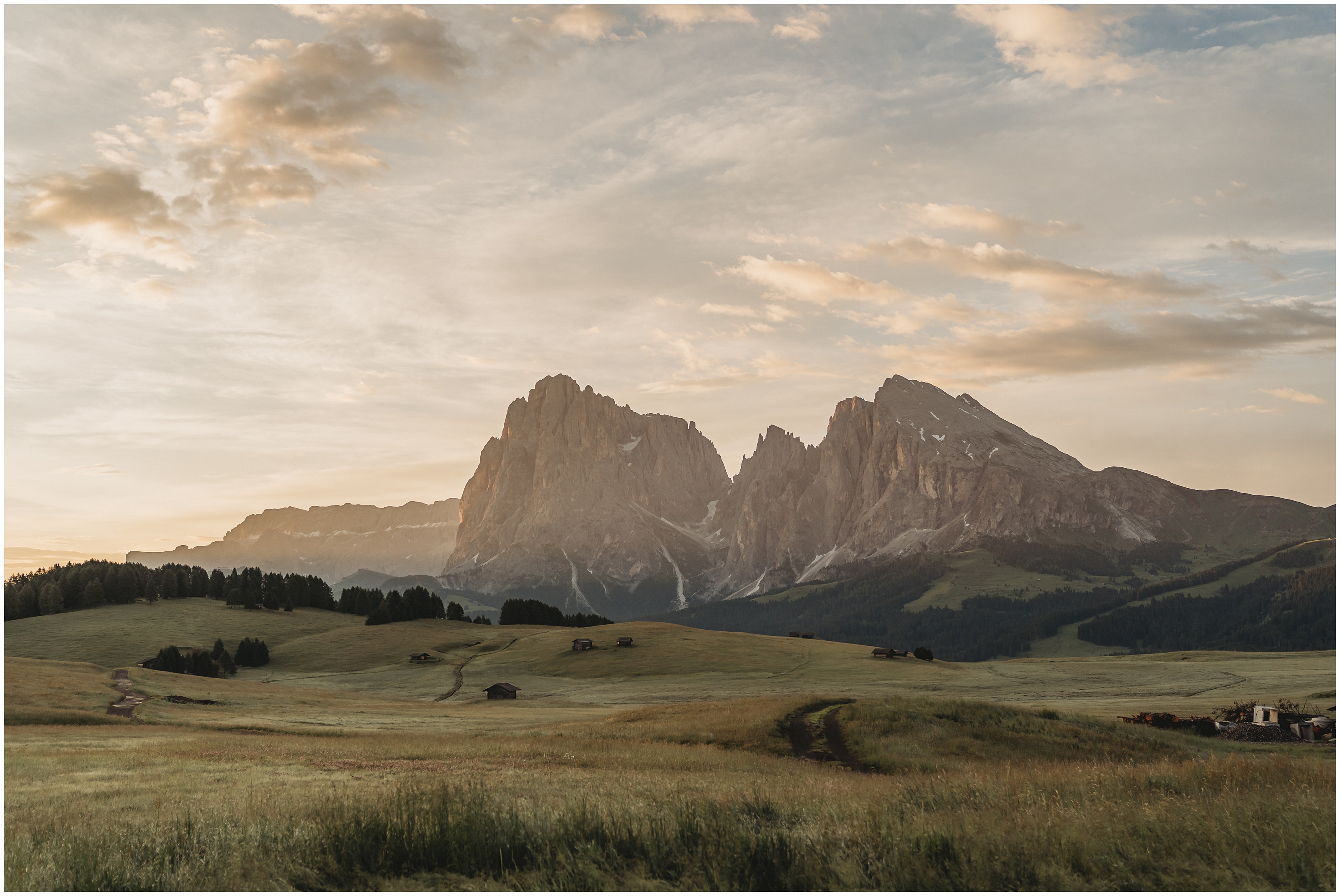
Just off of the northern coast of Sicily, lies a unique string of UNESCO protected islands – the Aeolian Islands. The Aeolian Islands consist of: Vulcano, Lipari, Salina, Panarea, Stromboli, Filicudi and Alicudi, each unique in its own way. If you have been following my blog, then you may have read about our NINE hour hike to the rim of the Stromboli volcano. That was a crazy, but unforgettable, experience! This year, we thought we might try out something a little more chill. Thus, our summer weekend in Salina was born.

About Salina
Salina is known for its productions of capers and honey-sweet Malvasia wine. It is known as the “green island,” as it has its own water source and thus is greener than most of the other islands. Salina is actually the second largest of the Aeolians (after Lapari) and has around 2,300 inhabitants and three towns: Santa Marina, Malfa and Leni. This makes Salina a nice break from society.
Travel
To travel to Salina, you need to take a hydrofoil or ferry from Millazzo or Messina. You can also take a boat from Palermo or Naples. We traveled from Milazzo and parked in Garage delle Isole (without a reservation). Just to note if you plan to park there – check the hours first! They are not open 24 hours a day like other garages. The port you would need to get off at is Salina S.M. not Salina Rinella. Book tickets here.
Once on Salina, you have several options for transportation: taxi, renting at motorbike, car, or small open gocart, or public bus (the updated time table here.) For the bus, you can buy the ticket when you board and the bus stop is next to the main square in Santa Marina (1/2 minute walk from the port).
Hotel
There are a few hotel options on the island, so be sure to reserve early! I reserved our room at Principe di Salina in January for June. We chose Principe di Salina because we had heard amazing things from a friend and loved that it is small and quite curated. We spend most of our time in Salina at Principe de Salina and we weren’t sad about it one bit! At some point, we would like to go back and see more of the island. Maybe next year.
For now, you can enjoy the photos from our summer weekend in Salina and perhaps even get some ideas for yourself! Below are some photos from our stay at Principe di Salina and from exploring Malfa (make sure to scroll to the end to see more of Malfa).
Our Stay at Principe di Salina

















Exploring Malfa








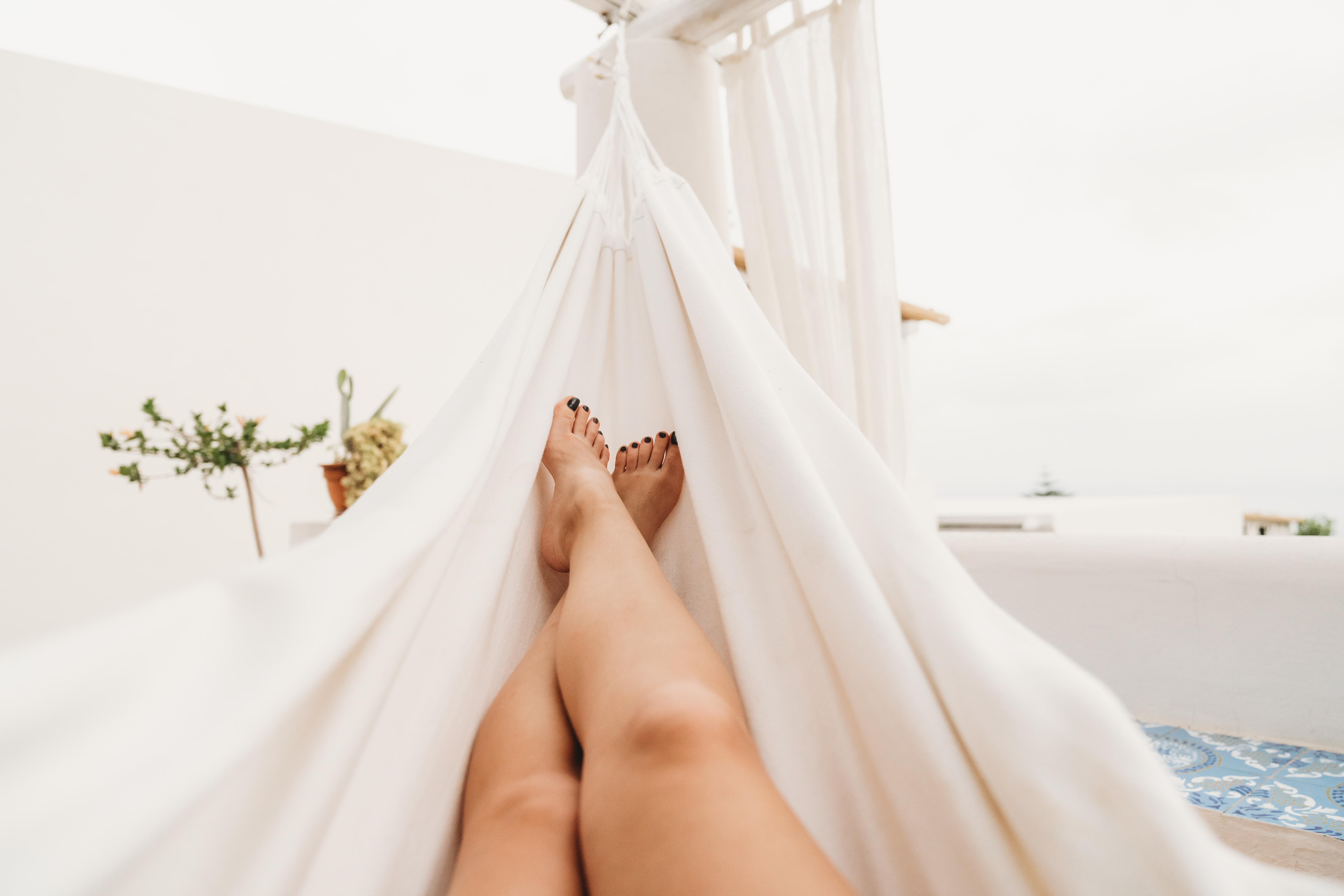
After a year of living in Sicily, Jordan and I had our first visitor. My best friend, Ashley, flew all the way across the Atlantic to visit and see this crazy beautiful island on which we live. I couldn’t have been more excited to see her again or to show her my home.
One thing about visiting Sicily is that you really NEED a car. There are so many places in Europe that have incredibly efficient public transportation. Unfortunately, Sicily is not one of them. So, for her first full day here, we did a little day trip to three classically Sicilian towns: Caltagirone, Piazza Armerina, and Enna. This was one of my favorite island road trips, so I wanted to make sure to share it.
Note: This is a great day trip because visiting these towns in order (or reverse order) creates a circle from Sigonella (or Catania).
Stop 1: Caltagirone

This town was NOT on Ashley’s “to see” list, but I knew it should be. Caltagirone is in the middle of nowhere Sicily, but many people travel there each year for the infamous Sicilian ceramics. The town itself has no shortage of ceramics shops. Some shops have working studios and artists in them, others are just a store front for sales. Most buildings in the old town are decorated with ceramic tiles, so it is vibrant and colorful!



One of the highlights is the Scalinata di Santa Maria del Monte, a 142 step staircase that connects the lower to the older upper town. Each stair is decorated with its own unique design on handcrafted ceramic tiles.






We visited a multitude of shops (most of which do not permit photos). At one shop, we were able to visit the workshop and learn about the history of Sicilian ceramics. It was very interesting!



While we were there, we decided to grab lunch before moving on to our next location. Being the planner I am (not), I randomly picked a restaurant (Coria) with good reviews on Google. As we entered through the doors, I noticed a bright red sign by the entrance indicating it was a Michelin Star restaurant. Whoops! We were not dressed for the occasion, nevertheless, we were already there. Of course, the food and drinks were absolutely amazing and we really enjoyed ourselves.




Stop 2: Piazza Armerina
Prior to this trip with Ashley, neither Jordan nor I had ever been to Piazza Armerina before. The main attraction here is Villa Romana del Casale, a fancy Roman villa that dates back to the 4th Century A.D. Villa Romana del Casale has the best preserved Roman mosaics in the world. The villa was the property of a powerful Roman family and is quite expansive (either a senator or as part of an “imperial function” of the emperor [Maximian] himself).











We spent some time walking the grounds and pretending to be back in Roman times for a moment.





Stop 3: Enna
Jordan and I have been to Enna many times before and you just CAN’T beat the views. Enna is one of Sicily’s classic “hilltop towns” and is located in the center-ish of the island. Thus, it doesn’t see many tourists (unless it’s Easter).
Our plan was to visit Castello di Lombardia,followed by Rocca di Cerere. Unfortunately, the castle closed early that day, so we just visited the super majestic overlook featured in the photos below. Since it was also cold and extremely windy, we only visited Enna Cathedral before heading back home.





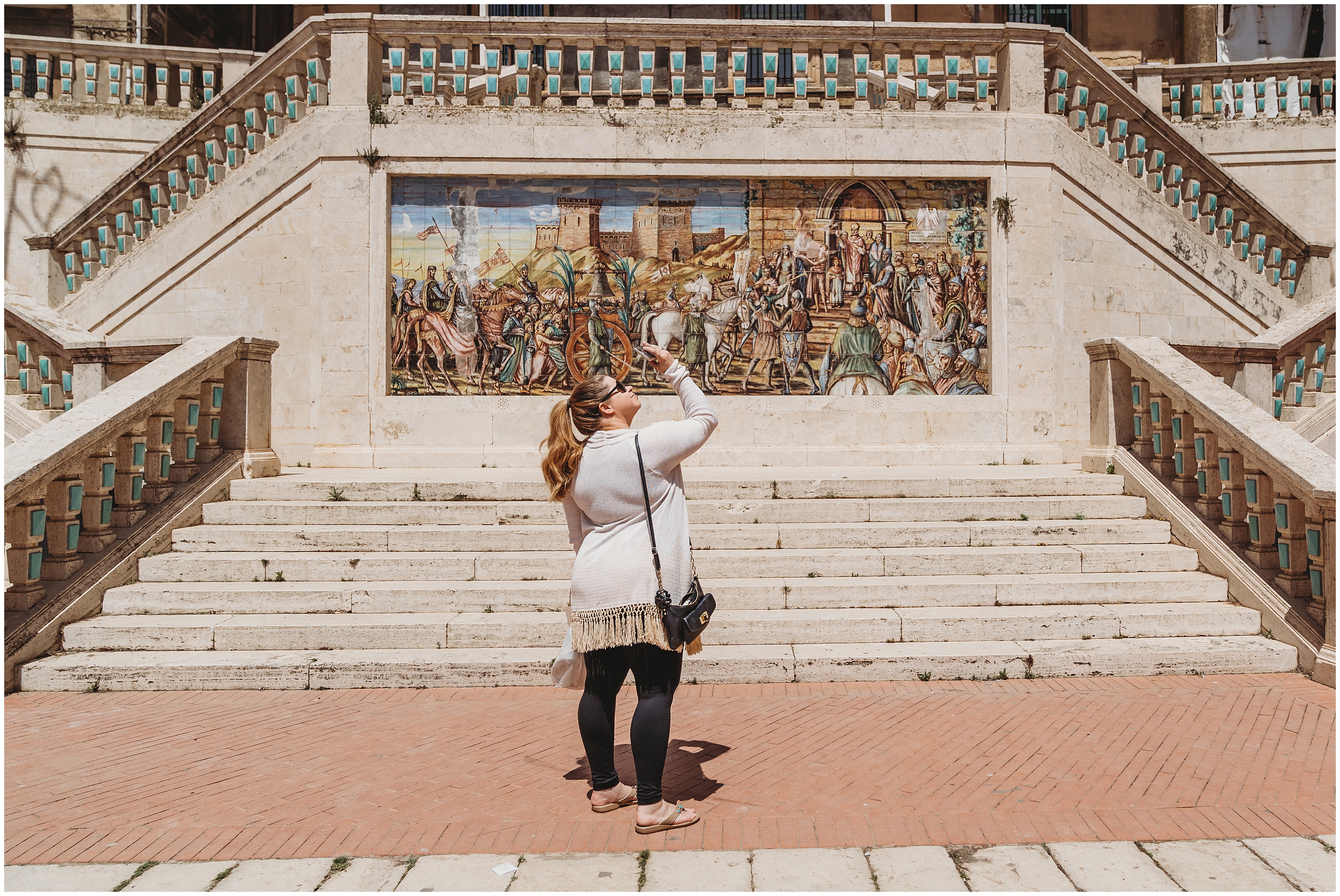
I’ve been to Paris and I’ve been to London, and while they have been super fabulous, Lisbon takes the cake for me! Ever since I moved to Sicily, Lisbon has been on my “must see” list. However, since I hate flying (surprise, right?!), I mainly opt to visit locations with direct flights from Catania. There is no direct flight from Catania to Lisbon, but I wanted to go so badly, I sucked it up. Can I just say, it was totally worth it! I’d give it a 10/10, highly recommend. So, what should you do if you end up like me and find yourself spending three days in Lisbon? Here are some of my favorite suggestions, but believe me, there is more to be had than what I’m about to tell you.


Three Days in Lisbon
Airport
Upon arriving in Lisbon, I took a car to my hotel. To get from the airport to the city center, you can take a taxi (20€ and approximately 20 minutes), bus (4€ and approximately 45 minutes), or metro (€1.45). If you buy the Viva Viagem or 7 Colinas card (€50) and put money on it, you can load your card with a travel pass for the day (€6.30) which is valid for metro and rail.



Hotel – Palácio das Especiarias
There are a ton of options in Lisbon, but I can’t recommend the hotel I stayed in enough. Palácio das Especiarias is a 16th century palace that you can actually stay in. Whaaat?! At first, I was a little worried that it would be a bit outdated (in terms of accommodations), but it wasn’t (fair warning though, there is no elevator, only stairs). It was completely charming and one of my favorite parts of my visit. The hotel is centrally located in the historic district with plenty to do and see right outside of its doors. Next time I visit Lisbon, I will definitely stay here again. Thanks to Katie of Planes, Trains and Babies for finding it for me.







Things to See and Do
This list will be in no way comprehensive, but I will provide you with some ideas from my favorites.
Elevador da Bica
Portugal has three funiculars, Elevador do Lavra, Elevador da Glória and Elevador da Bica. As Lisbon is so hilly, they are a great way to get up and down the steep inclines. They are also very popular for tourists. Elevador do Lavra is the oldest, with service beginning in 1884. I did not take a ride on one, but I did stop to catch a couple of photos at Elevador da Bica. There are two cars here – one is the traditional yellow and another is covered in beautiful graffiti.


Miradouro S.Pedro de Alcantara and Miradouro De Santa Luzia
The miradouros are observation points that overlook the city. There are a few in Lisbon, but Miradouro S.Pedro de Alcantara is the largest and most iconic one. It is also right next to the Elevador da Glória. Miradouro De Santa Luzia, was my personal favorite. It has a beautiful little garden and reflecting pool. It is located in the Alfama neighborhood about halfway up the hill. You can see the Tagus River from there as well.








Castelo de S. Jorge
São Jorge Castle is a Moorish castle on a hilltop overlooking the historic city center and the Tagus River. It is a main tourist site of Lisbon and dates back to the medieval period. I enjoyed the quick tour, a glass of wine while overlooking the city, and a quick ice cream on the way back to my hotel.



Praca do Comercio & Arco Da Rua Augusta
The largest of Lisbon’s plazas, it’s located right along the river’s edge. In the square is a statue of King José I and the Arco da Rua Augusta. You can climb the Arco da Rua Augusta for a small fee. Be warned there are many small stairs to climb, but the view from the top is worth it!! I made the climb during the middle of the day, but I’d definitely recommend this at sunset.






Praca Dom Pedro IV (Rossio)
The main, central square of Lisbon, with the Dona Maria II National Theater at the head and a statue of Dom Pedro IV in the middle. The stone pattern here is unmistakable and the fountains are a pretty turquoise.


Tagus Riverbank
A great way to close out any day in Lisbon is catching sunset along the Tagus Riverbank. There’s often live music and a few impromptu picnics. Additionally, if you are a gin lover, Lisboa Gin is the best I’ve found on all of my travels. I just had to bring a bottle home!



Day Trip From Lisbon
Sintra – Pena Palace
A great day trip from Lisbon is to Sintra. I visited Pena Palace, but honestly wish I had more time here, as Pena Park spans over 200 hectacres. The castle sits atop a hill in the Sintra mountains. It’s a colorful Romanticist castle that is very much worth the visit.













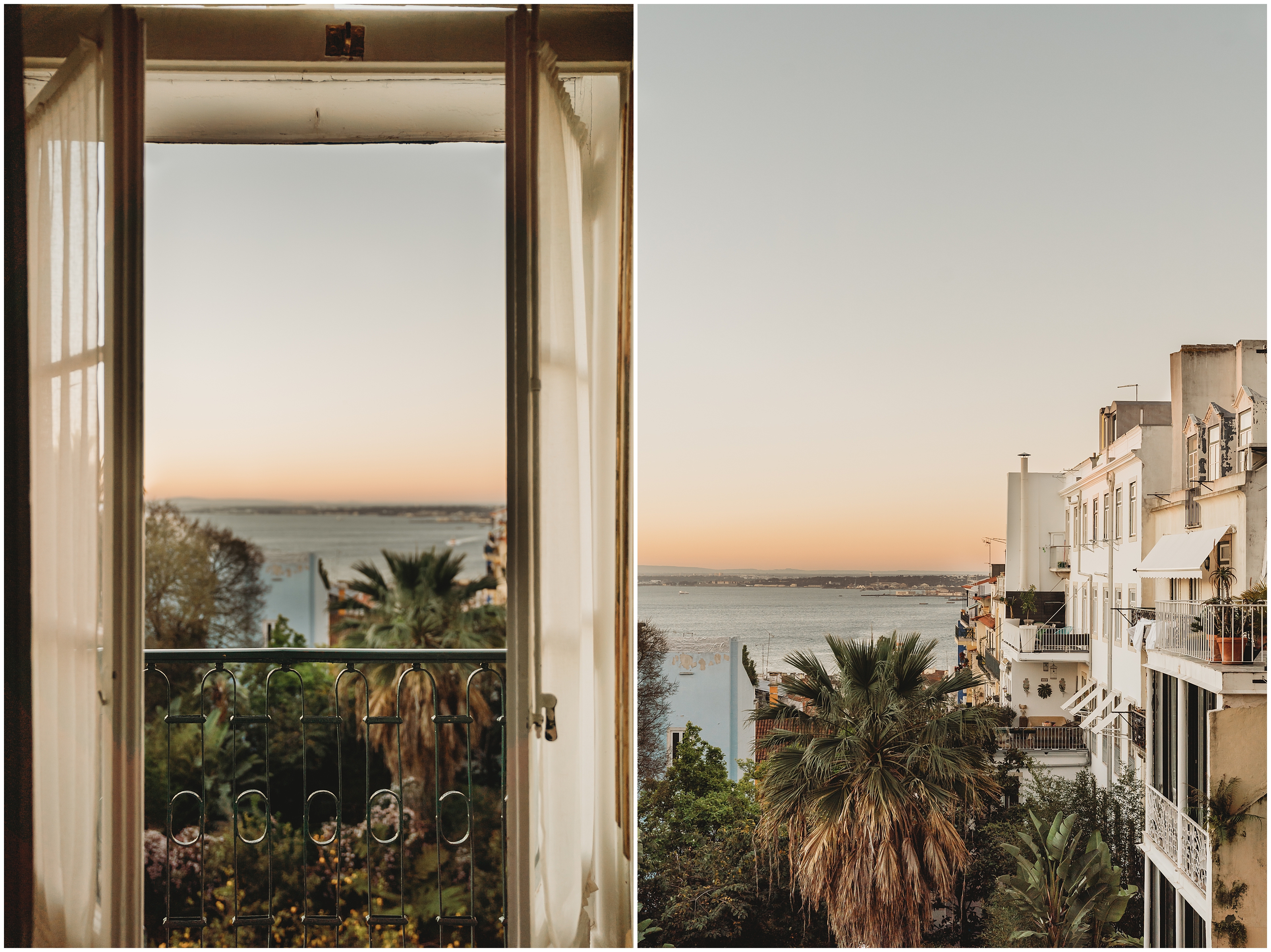
This article was originally featured on Little Brave Travels. Feel free to check it out there as well!
When people think of Sicily, they probably think of beautiful beaches, sun, and sand. To be honest, that is what I thought at first too. The truth is, those things only cover a tiny portion of all that the island has to offer. If you’ve been on Instagram, I’m sure you’ve seen tons of amazing travel photos from Bali, Paris, and the Amalfi Coast, but very few from Sicily. Does that mean Sicily is not worth visiting? Absolutely not! Sicily is one of the most picturesque places I’ve had the pleasure of exploring. You just have to know where to go.
My husband and I moved to the island of Sicily just over a year ago. We were incredibly excited to get to know our new home as soon as we arrived. Even after a year of constant exploration, we still haven’t seen it all. At approximately 25,000 square kilometers (that’s almost 10,000 square miles), Sicily is the largest island in the Mediterranean. Because of this public transportation is impractical. Thus, renting a car is the way to go.
While there are some very popular towns to visit in Sicily (some I’ll mention here), there are many others that aren’t known at all. I’ve learned that it doesn’t matter if you’ve heard of it or not. Each town in Sicily is unique in its own way and many towns that are lesser known have amazing food, their own particular charm, and…. fewer people!
If you’re planning to visit Sicily, but you aren’t sure where to start, here are my top five instagrammable spots to know before you go!

Top 5 Instagrammable Spots in Sicily
1. Taormina
Arguably the most popular Sicilian destination, the hilltop town of Taormina, is unlikely to disappoint. In the summer, the town is “dressed to the nines” with colorful flowers and a plethora of cute little shops. You can visit the idyllic pebble beach in the bay of Taormina and swim in the clear, turquoise waters and then take the cable car up to the town. In town, be sure to visit the ancient Greco-Roman theater that sits cliffside after exploring all of the adorable little alleyways and town squares. (See more about visiting Taormina here).

2. Mt. Etna
In the vicinity of Taormina is the unmistakable Mount Etna. A rather active volcano (with generally pretty small eruptions). If you’re lucky, you’ll get to see her show off! While she can be seen from all around the northern east side of the island, there’s nothing quite like a visit to the top. You can visit either the north or south side, with skiing, snowboarding, and sledding available during the winter and hiking available most all year long. Guided tours are available for a fee and there are many tour companies that make the journey from most big cities. (See more about skiing Mt. Etna here).
If you do rent a car and decide to make the journey on your own, I’d highly recommend stopping on the way up (or down) for lunch at an agritourismo (maybe this one?) on the side of the volcano. The vines of the wineries are often amazing photo spots and the food and wine are top notch.

3. Agrigento (and vicinity)
On the south side of the island lies Agrigento, a hilltop city containing the ruins of the ancient city of Akragas. This attraction is also known as the Valley of the Temples and is a UNESCO World Heritage Site. While this is also one of Sicily’s most famous attractions, it is definitely worth the visit. Entrance to the park includes a fee and bag check, but once you’re in, there is so much to explore! Many of the temples are well preserved and quite impressive! Once you get toward the back of the park, you will find notably less people. Furthermore, there are optional gardens once inside the park that you can also elect to visit for a small fee. (See more about visiting Agrigento here).

West of the Valley of the Temples lies Scala dei Turchi (the Turkish Steps), which is a stepped white cliff overlooking sandy beaches. You can pull off the highway to overlook it from above as well as visit a lido that will take you right down on the beach where you can climb up on it. Many people love sunbathing and jumping from the rock itself. (See more about Scala dei Turchi here).

4. San Vito Lo Capo
A small seaside town in northwestern Sicily, San Vito Lo Capo is prominently known for its fabulous flat and sandy beaches. While swimming in San Vito Lo Capo is highly recommended, a boat cruise is fun and affordable, and the town is pretty with lots to do a night. (See more about San Vito Lo Capo here).

5. Ortigia
Technically part of Sicily, Ortigia is an island that is the historical center of the city of Syracuse. I promise it sounds more confusing than it really is and its totally worth the trip. In my opinion, Ortigia is one of the more beautiful cityscapes of Sicily. My best recommendation here is to plan to just walk around. From ancient ruins to the enchanting white square of Ortigia Piazza del Duomo, you will understand just why this destination is so instagrammable.

While Sicily is definitely the most popular in the summer, visiting during off season provides significant advantages for photo opportunities. August is the month in which Sicilians take their vacations, so I would be wary to visit then, as many shops will be closed. Additionally, the same is true during the months of January and February. It is also important to keep in mind that Sicily has a significant rainy season (particularly in the fall and spring), so do plan carefully and accordingly!


Besides Sicily, we had only visited Naples and the Amalfi Coast within Italy before traveling to Rome. While we love Italy and are super excited to eventually “see it all,” we have been putting off many of the key cities until later. We mainly want to visit Italy in off season so that we can try to avoid the crowds. I say try because that absolutely may not be possible, as with our trip to Rome.
Prior to visiting the “eternal city,” I received mixed feedback; some people LOVED it and others HATED it. I was determined to be in the LOVE camp from the start. We decided to visit during a long weekend in February with unusually warm weather and enlisted the help of Katie of Planes, Trains and Babies to pin down an itinerary and tours. I honestly felt SO RELIEVED that I did not have to plan this trip, as there are SO many things to see and do in Rome, it’s hard to choose.
So, if you are planning a trip to Rome yourself, you may be thinking, “Should we really book tours?” “Is February a good time to go?” “Was a long weekend enough time?” Read on to find out!


Our Itinerary
Day 1
We arrived in Rome mid-day. It took us about an hour to get from the airport to our hotel and then we hopped on the metro to grab some lunch. Katie recommended the cacio e pepe pasta at Hotel Eden Il Giardino and it did NOT disappoint. We then paid a visit to the INCREDIBLY packed Trevi Fountain before heading back to our hotel to get ready for dinner.
 Yikes! Lighting was terrible and the Fountain was packed, so it was a quick gawk and coin toss before we moved on.
Yikes! Lighting was terrible and the Fountain was packed, so it was a quick gawk and coin toss before we moved on.
One piece of advice Katie gave me was to pre-purchase tours for Rome. We don’t really consider ourselves to be “tour people,” but we trusted the travel expert, and guess what…. we were SOOO glad we did! Rome ended up being packed, which was unexpected. Tip: My advice is do not go “in season.” Even in February, it was overwhelming. Busy season in Rome is a no for me.
Our first tour (and my FAVORITE!!!) was a food tour of Rome by LivItaly tours. Perhaps I loved it because it wasn’t in a jam packed area, but our guide, Jill, was absolutely amazing! We started out with traditional aperitivo (wine and a charcuterie plate), moved on to some traditional Roman fried food (like the Jewish artichoke), experienced true Roman pizza (it’s super thin, square and incredibly tasty), sat down for another round of cacio e pepe pasta, and finished off the night with some unique gelato flavors – like pine tree (AMAZING)!






While walking from place to place on the food tour, we also received a mini tour of the city. Our stops included the Parthenon, the turtle fountain, and the location where Ceasar was killed. Jill also told us about all of the little gold walking stones we were seeing in front of the houses in the Jewish Quarter. Sadly, they represent the Jews whom were taken from the homes where they are placed. The gold stones detail names, arrest dates, concentration camps, and assignation dates.



Day 2
On Day 2, we got up early for a Sistine Chapel and St. Peter’s Basilica small group tour (6ppl max). We ended up being the only ones on our tour, so it was basically a private tour!
If I had to do it all over again, I would do the following things: show up earlier than the time they tell you to meet, walk straight to the Sistine Chapel – don’t stop – and, pay extra for a longer tour that includes the museums.
Tour groups are the first to enter the Vatican, but there is still a queue at security. By the time we made it to the Sistine Chapel, there were already quite a few people inside. If we had been earlier, we could have visited the chapel with less people. With that being said, because you run to the Chapel when you get in, it’s best to have a tour to see the rest of the Vatican museums on your way out. Our tour led us right to St. Peter’s Basilica, meaning we would have to pay again to re-enter the Vatican museums and I was not keen about doing that.
Also, as a side note, you can make reservations to visit the underground of the Vatican/St. Peters, but you have to do it directly from the website and FAR in advance. Additionally, you can visit the dome of St. Peter’s Basilica, but EVERYTHING at the Vatican is CASH ONLY! So, don’t be like me and forget to stop at an ATM before you go.
Another thing to know is that it is forbidden to photograph the Sistine Chapel. There are private tours in which photos ARE allowed, but they cost upwards of 450€ per person!!! We opted not to spend our life savings on that, so you won’t find any Sistine Chapel photos here. Sorry!
The Vatican Museums









St. Peter’s Basilica






After we had our fill of the Vatican, we wandered straight down the street to Castel Sant’Angelo. We were starving and ready for lunch, but opted to check this place out while we were in the area. It was a good choice. In my opinion, this is a SOLID place to visit just before sunset. You get an amazing view of the Vatican AND Rome. It’s incredibly beautiful and well worth the entry fee. My photos 100% do not do it justice, as it was midday with the brightest sun.
Castel Sant’Angelo







For lunch we dropped in to a local old-school trattoria, Dino E Toni. Once we were seated, the food came out of the kitchen. We didn’t even have to order. It was great and inexpensive.
Day 3
For our last day in Rome, we booked a tour of the Coliseum, Roman Forum, and Palantine Hill. This tour lasted three hours. While I was intrigued by all of the history, about half way through I was starting to check out. Despite the fact that the tour lasted three hours, we missed many things I wanted to pause and explore more. I think that’s why I wasn’t such a fan of this one. What was super cool about it, is that we got to go out on the Coliseum stage like the gladiators and check out the underground, where they kept the animals, etc. It was a little bit creepy but sooooo informative. I really loved this part of the tour.
Coliseum Tour






Roman Forum and Palatine Hill






Coliseum at Sunset




Our Hotel
We LOVED The H’All Tailor Suite! I decided to book this particular hotel because of their breakfast. The hotel’s Michelin star restaurant serves and individualized breakfast. It was really incredibly and I would definitely stay here again. Also, our room was HUGE!




I’ve written about quite a few of my favorite areas to explore in Sicily – Agrigento, Mount Etna, San Vito Lo Capo… the list goes on. But one place I’ve featured before (see Maddie and Justin’s farewell to Sicily shoot here), but never really talked about, is Cefalù. If you pick up a travel book about Sicily, the photo on the cover is likely to be Cefalù. That’s because Cefalù is insanely beautiful and 100% worth the visit if you are planning a trip on island.
 Photo: Jordan Gilles
Photo: Jordan Gilles
Cefalù is approximately two hours from our home, so we can make a fabulous day trip out of it. For everyone who doesn’t live in Sicily, it’s on the Tyrrhenian (north) coast. If you are flying in to Catania or Palermo and want to visit, it’s probably best to rent a car. Cefalù also holds one of my favorite hotels in Sicily, Hotel Kalura, so making a long weekend out of a visit is definitely well worth it.
So what are some of my favorite things to do in Cefalù? Great question! Here are my top 5:


Top Five Things to do In Cefalù
1. Leisurely stroll around the town and take in the splendor.
As I mentioned before, Cefalù is easy on the eyes. Part of the fun of going there are the views!





2. Pay a visit to Cefalù Cathedral.
One of Sicily’s most important structures from the Norman domination, Cefalù Cathedral will not disappoint. Built in 1131 (what?!) is decorated with some of the best preserved and earliest mosaics in Sicily. If you take a look a the image of Christ below, you will notice that he is holding his hand in what could be misinterpreted as a “gang sign.” This is actually a depiction of him blessing the congregants, as he is “holing his fingers as the faithful do when making the sign of the cross.”



3. Hang out or take a swim in the crystal clear waters of Spiaggia di Cefalú.
The beaches in Cefalù tend to be a bit rocky, but boy, the waters are gorgeous!



4. Take a hike.
La Rocca offers over the top views of Cefalù – literally. The hike takes about an hour (and isn’t a leisurely stroll, so don’t do it if you aren’t wearing proper shoes). As an extra perk, you will pass the ruins of Temple of Diana on the way up.

5. Enjoy delectable Sicilian cuisine.
Our personal favorite spots to grab a bite are Enoteca Le Petit Tonneau (at sunset) and La Brace (for dinner). Thanks to Maddie and Justin for recommendations of both!




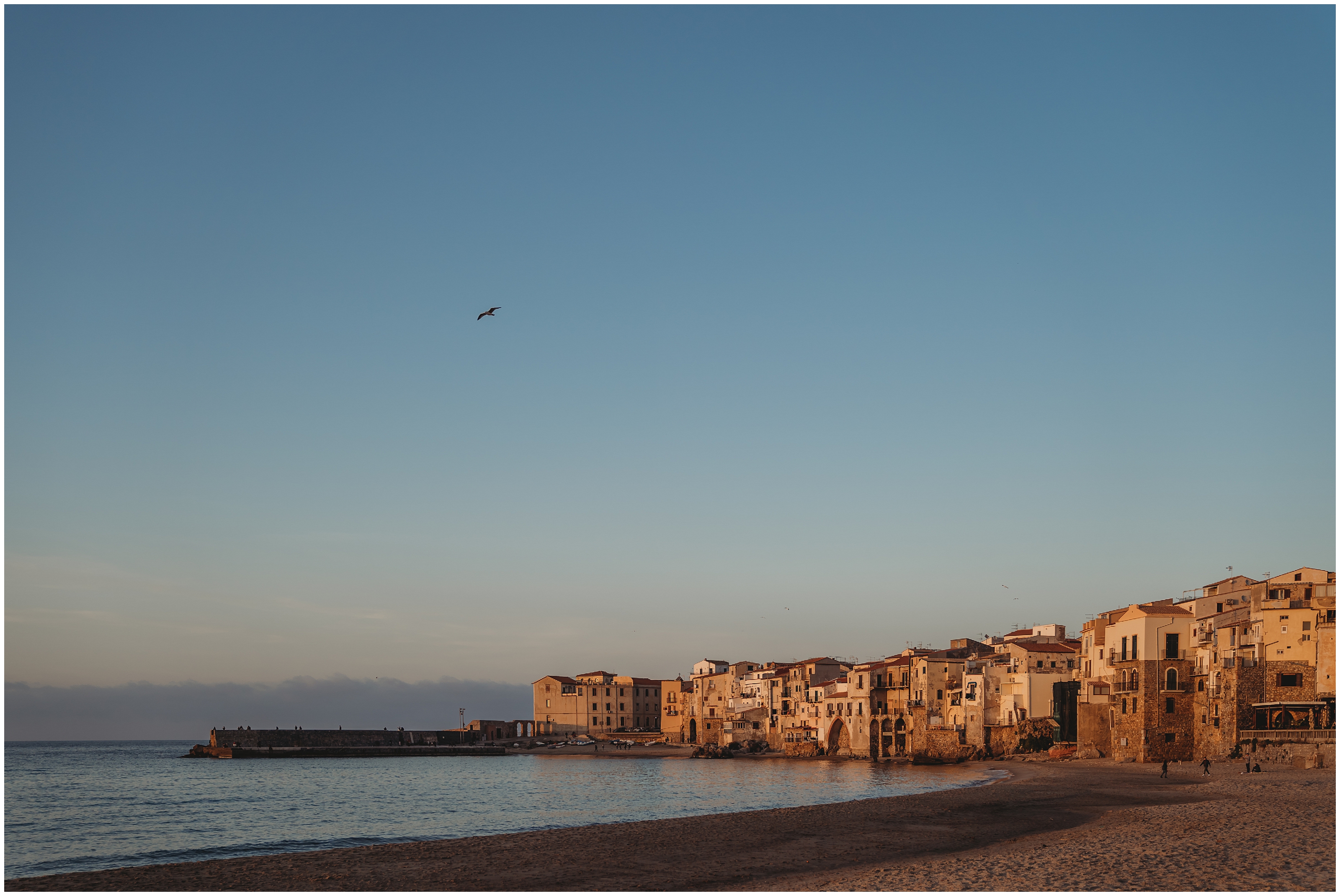
Out of the many day trips we have made in Sicily, our visit to Agrigento was probably my favorite. While Taormina has classic Sicilian charm, and San Vito Lo Capo is a beach town of dreams, Agrigento just utterly fascinated me. Agrigento is a hilltop city on the southwestern coast of Sicily. There lies the ancient city of Akragas (582 BC), which you can visit in what is known as the Valley of the Temples. Sounds like there would be many temples located in this valley, right? Well, there are many temples – eight to be exact. But, the location is not in a valley, but instead on the top of a hill overlooking Agrigento. What strategic placement!
The temples available to visit include the Temples of:
- Hera
- Concordia
- Heracles
- Olympian Zeus
- Castor and Pollux
- Hephaestos
- Demeter
- Asclepius (the God of Medicine).
All of the temples were built between 510 BC and 430 BC and are in varying conditions. As you can see in the photos below, some of the temples are incredibly well preserved.
Ticket prices range from 10€ to 15€, depending on which ticket you purchase (park only, or combined with garden or combined with archeological museum). You can purchase your tickets ahead of time here or at the park. You must also have euro cash to pay for parking (varies on time you spend there). Upon entering the park, you must go through a security screening. No drones are permitted.
Just west of Agrigento, you can find another of my favorite attractions, Scala dei Turchi (also known as the Turkish Steps; pin here). The Turkish Steps are natural cliffs of white marl that have been carved into “steps” with centuries of wind and rain. The bright white color of the steps in contrast to the turquoise waters of the sea are simply stunning. You can drive by and view the steps from the top (there is a pull off with an overlook) and travel down to the beach where you can start at the bottom and climb up! You get to the bottom, you simply need to park and enter though the nearest lido – Lido Scala dei Turchi (entrance was free, but we did not go in season.
Valley of the Temples




























Turkish Steps














